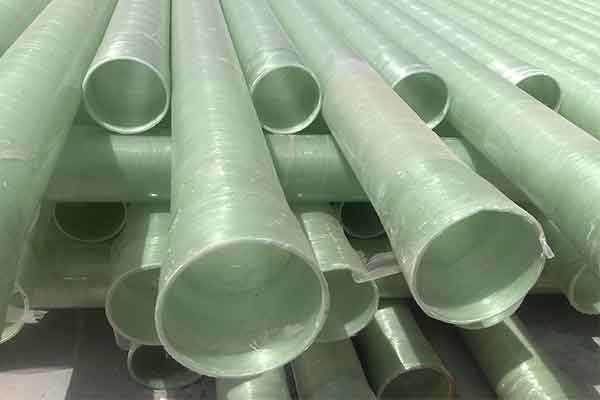FRP pipe is a lightweight, high-strength, corrosion-resistant non-metallic pipe. It is glass fiber with resin matrix weight wound on a rotating mandrel layer by layer according to the process requirements, and quartz sand is evenly spread between the fibers as a sand layer. Its tube wall structure is reasonable and advanced, which can give full play to the role of materials. Under the premise of meeting the strength of use, it improves the rigidity and ensures the stability and reliability of the product. FRP sand pipe is accepted by the majority of users because of its excellent chemical corrosion resistance, lightweight and high strength, no scaling, strong shock resistance, long service life compared with ordinary steel pipes, low comprehensive cost, fast installation, safety, and reliability.

FRP pipes
FRP pipes are used in petroleum, chemical, and drainage industries. The production of glass fiber reinforced plastic pipe industry is developing rapidly, the quantity is increasing year by year, and the application scope and departments are also becoming wider and wider.
There are 9 commonly used types of FRP pipes:
- FRP desulfurization pipeline
- FRP sand pipe
- FRP pressure pipe
- Fiberglass cable protection tube
- FRP water pipeline
- FRP insulation pipe
- FRP ventilation duct
- FRP sewage pipe
- FRP top tube
- FRP static conductive tube
Fabrication and installation of pipe supports and hangers
- The pipe racks produced on site are strictly in accordance with the specifications and drawings and are protected by painting. The lifting lugs of the tie rod hangers and the spring hangers shall be welded according to the steel structure production standards, and 100% penetration or magnetic particle inspection shall be carried out.
- All pipe rack locations shall be indicated on the one-line diagram.
- When the pipeline is installed, the bracket should be fixed and adjusted in time. The position of the bracket should be accurate, the installation should be flat and firm, and the contact with the pipe should be tight.
- The fixing bracket shall be installed according to the requirements of the design documents and shall be fixed before the compensator is pre-stretched.
- The sliding surface of the guide bracket or sliding bracket should be clean and flat, and there should be no skew or jamming. The installation position should be offset from the center of the bearing surface in the opposite direction, and the offset should be 1/2 of the displacement value or comply with the design documents, and the thermal insulation layer should not hinder its displacement.
- When temporary supports are used for pipeline installation, they shall not conflict with the official supports and shall be clearly marked. The pipes should be removed after installation.
- No direct bonding or welding is allowed between the FRP pipe and the pipe frame (including the support). Between the pipe fittings (pipe clips, pipe supports, or pipe clamps) of the FRP pipe fixing pipe rack and the outer wall of the pipe, there should be a rubber block or other soft cushion with a thickness of not less than 3mm.
- After the pipeline is installed, the form and position of the supports should be checked one by one according to the design documents.




























